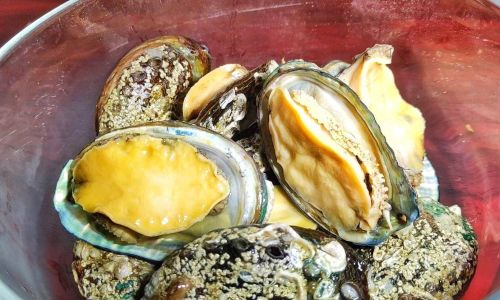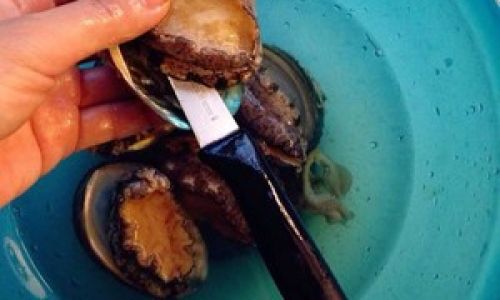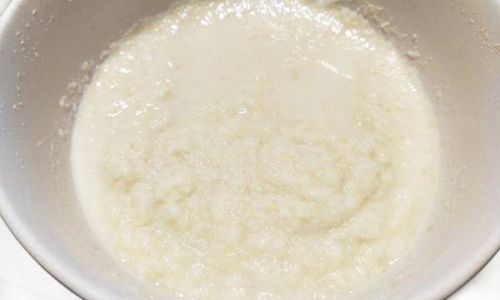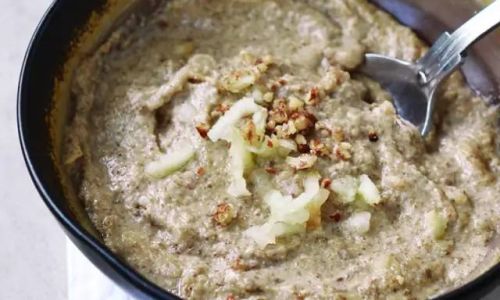Introduction
Abalone, a prized marine delicacy cherished for its tender texture and briny sweetness, is a culinary treasure enjoyed worldwide. However, its delicate nature and short shelf life make preservation a critical concern for home cooks and seafood enthusiasts. Freezing abalone correctly ensures that its quality, flavor, and nutritional value are retained for months, allowing you to savor this luxury ingredient at your convenience. This comprehensive guide will walk you through the entire process of freezing abalone, from preparation to storage, thawing, and usage, while addressing common pitfalls and expert tips to elevate your results.
Understanding Abalone: A Brief Overview
Abalone is a type of mollusk found in coastal waters, clinging to rocks with its muscular foot. Its meat, often referred to as “the king of shellfish,” is rich in protein, vitamins, and minerals like iodine and omega-3 fatty acids. The two primary forms of abalone available are fresh (live or shucked) and frozen. Fresh abalone has a shorter lifespan—typically 2–3 days when refrigerated—making freezing an essential skill for those who purchase in bulk or wish to stock up during harvest seasons.
Preparation Steps: Cleaning and Pre-Freezing Treatment
Freezing abalone without proper preparation can lead to texture deterioration, freezer burn, or off-flavors. Follow these steps to ensure optimal results:
-
Live Abalone Handling:

- If purchasing live abalone, store it in a breathable container (like a mesh bag) in the refrigerator. Do not submerge it in freshwater, as this will kill the mollusk prematurely.
- To shuck live abalone, use a blunt knife to pry the meat away from the shell, starting at the base of the foot. Discard the viscera (guts) but retain the roe (if present) and the foot, which is the most prized part.
-
Cleaning:
- Rinse the abalone meat under cold running water to remove sand, mucus, and debris.
- Gently scrub the foot with a soft brush to eliminate any residual grit.
- Pat dry with paper towels to minimize ice crystal formation during freezing.
-
Blanching (Optional but Recommended):
- Blanching halts enzyme activity that can cause spoilage and textural changes. Bring a pot of salted water to a rolling boil.
- Submerge the abalone for 30–60 seconds, then immediately transfer it to an ice bath to cool. This step also tightens the meat, enhancing its texture after thawing.
-
Slicing or Portioning:
Cut the abalone into desired sizes (e.g., thin slices for stir-fries, thick steaks for grilling). Portioning allows you to thaw only what you need, reducing waste.
Freezing Methods: Raw vs. Cooked
Choose the method that best suits your culinary needs:
-
Freezing Raw Abalone:

- Vacuum Sealing: Place portions in vacuum-seal bags, removing all air to prevent freezer burn. This method preserves texture best but requires specialized equipment.
- Freezer Bags: Fill resealable plastic bags with abalone, press out excess air, and seal tightly. For added protection, wrap the bag in aluminum foil or place it in a rigid container.
- Flash Freezing: Spread abalone slices on a baking sheet lined with parchment paper. Freeze until solid (2–3 hours), then transfer to bags. This prevents clumping.
-
Freezing Cooked Abalone:
- Lightly sauté, steam, or poach the abalone before freezing. Cooking denatures proteins, reducing texture changes during thawing.
- Cool completely before packaging to avoid condensation, which leads to ice crystals.
-
Marinated Abalone:
Toss abalone slices in a flavorful marinade (e.g., soy sauce, mirin, garlic) before freezing. The acid in marinades can slightly soften the meat, so use this method for dishes where tenderness is desired.
Storage and Shelf Life
- Temperature: Maintain your freezer at 0°F (-18°C) or below. Fluctuations in temperature accelerate freezer burn.
- Containers: Label all packages with the date and contents. Use opaque containers to protect against light, which degrades flavor.
- Shelf Life: Properly frozen raw abalone can last 8–12 months. Cooked abalone has a shorter lifespan of 3–6 months due to exposed proteins.
Thawing Techniques: Safety and Quality
Thawing abalone incorrectly can ruin its texture and pose health risks. Follow these guidelines:
-
Refrigerator Thawing (Ideal):

Transfer frozen abalone to the fridge 12–24 hours before cooking. This slow thaw preserves moisture and flavor.
-
Cold Water Thawing (Faster):
Seal the abalone in a waterproof bag and submerge it in cold water. Change the water every 30 minutes until thawed (2–3 hours for steaks).
-
Avoid Microwave Thawing:
Microwaves can partially cook the edges, leading to uneven texture. Use only if absolutely necessary, and cook immediately afterward.
Using Frozen Abalone: Culinary Applications
Frozen abalone performs best in dishes where its chewy texture is an asset:

-
Stir-Fries and Sautés:
Slice thawed abalone thinly and stir-fry with vegetables and aromatics. The high heat caramelizes the edges beautifully.
-
Soups and Stews:
Add thawed abalone during the final minutes of cooking to prevent toughness. Its briny flavor enhances broths.
-
Grilling and Broiling:
Marinate thawed steaks in a miso or teriyaki glaze, then grill over high heat for a smoky char.

-
Ceviche and Crudo:
For raw preparations, ensure the abalone was frozen at -4°F (-20°C) for 7 days to eliminate parasites. Slice paper-thin and serve with citrus and herbs.
Common Mistakes to Avoid
- Skipping Blanching: Untreated abalone may develop a mushy texture after freezing.
- Overcrowding Freezer Bags: Air pockets lead to freezer burn. Press out excess air or use a straw to suck out air from zip-top bags.
- Refreezing Thawed Abalone: Once thawed, abalone should not be refrozen, as this degrades quality and safety.
- Ignoring Odor Checks: If frozen abalone develops a strong, ammonia-like smell, discard it immediately.
The Benefits of Freezing Abalone
- Reduces Waste: Preserve surplus abalone from fishing trips or sales.
- Cost Efficiency: Buy in bulk during peak seasons when prices are lower.
- Convenience: Have abalone ready for impromptu meals or special occasions.
- Global Accessibility: Enjoy abalone year-round, regardless of local availability.
Conclusion
Freezing abalone is a science that balances preparation, technique, and timing. By following this guide, you can extend the shelf life of this delicacy without compromising its prized qualities. Whether you’re a home cook experimenting with Asian-inspired dishes or a seafood connoisseur stocking up for winter, mastering the art of freezing abalone ensures that this oceanic gem remains a staple in your kitchen. Remember, the key to success lies in meticulous cleaning, proper packaging, and mindful thawing—a small investment of effort that rewards you with months of culinary delight.






0 comments